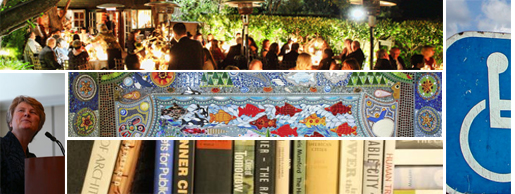 Cities as living organisms. Pedestrian bridge for Buffalo Bayou. Phoenix Project soars. Perkins + Will explores open workspace. Oscar Mayer's Weinermobile Run.
Cities as living organisms. Pedestrian bridge for Buffalo Bayou. Phoenix Project soars. Perkins + Will explores open workspace. Oscar Mayer's Weinermobile Run.
Cities as living organisms. Charlie Payne of HMC Architects discusses his journey to study cities as living organisms and to uncover implications the health of the city has on its populous through the firm’s Xref travel grant.
Payne visited three cities – Detroit, Dubai and Istanbul – and chronicles the health, history and culture of each.
Pedestrian bridge. SWA looks at Buffalo Bayou’s Jackson Hill Bridge in Houston, which is under development and will create ways to mitigate the wet landscape of the urban area and connect neighborhoods together.
The bridge is 345 linear feet and is made out of weathering steel truss bridge with pressure treated pine deck. It will be completed by the fall.
Via SWA Ideas Blog
Phoenix Project soars. Bob Carroll of Payette examines Xu Bing’s Phoenix Project at MASS MoCa, two 100-foot long, 10-ton sculptures intended to resemble birds in flight.
Carroll says the project was inspired by a visit to Bing’s native China after living abroad for nearly 20 years. Bing was amazed to find how much had changed both physically and cultural as a result of the country’s growing wealth, and found the “huge contrast” between the modern skyscrapers and the primitive shantytowns, which housed the construction workers, striking.
Via Payette Blog
Designing for innovation. Janice Barnes, a Principal and Global Discipline Leader for Planning and Strategies at Perkins + Will, explores the growing prevalence of open plan workplaces.
With a more complex, knowledge-based economy, there’s a growing interdependence between coworkers. Some tasks are simply too complex for one person to tackle. That’s when the idea of focus becomes exceedingly interesting. For companies that are at the forefront of innovation, truly trying to capture the ‘pre-wave’ of that next best thing, focus often means leverage. – Janice Barnes
Innovative Social Media
Oscar Meyer has announced the Weinermobile Run, a revamped tour of the Oscar Mayer Wienermobiles. To encourage consumers to follow the promotion on social media like Facebook, Instagram and Twitter, the young men and women who drive the six Wienermobiles — Hotdoggers — are being organized into teams. Each team’s vehicle gets its own name and hashtag. The teams will race around the country accumulating points as the drivers perform tasks or challenges submitted by the public on a Web site, wienermobilerun.com.
Via New York Times



 Vision for healthcare environments. Wish list for placemaking. Walkability in Mumbai. Sustainability with e-waste.
Vision for healthcare environments. Wish list for placemaking. Walkability in Mumbai. Sustainability with e-waste.